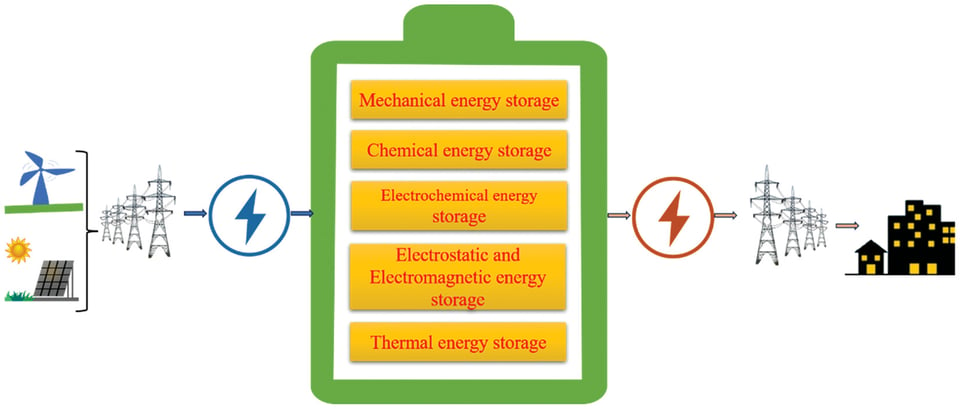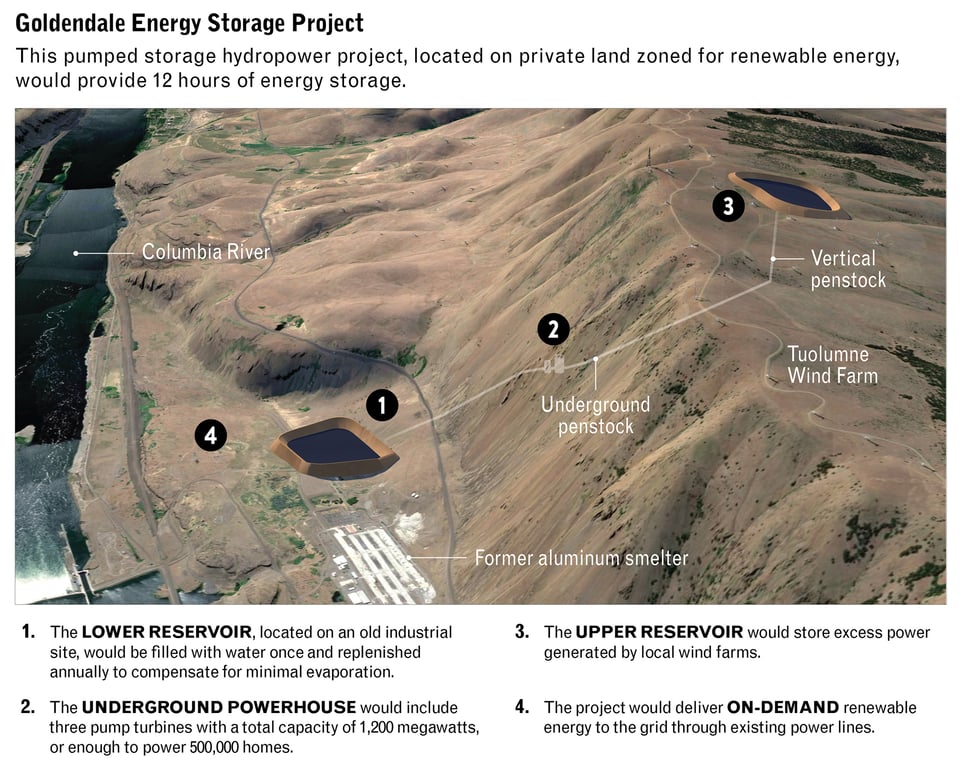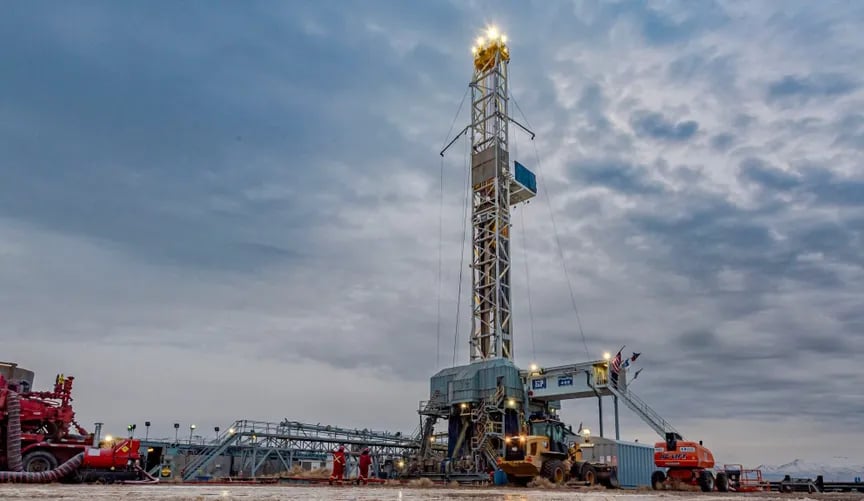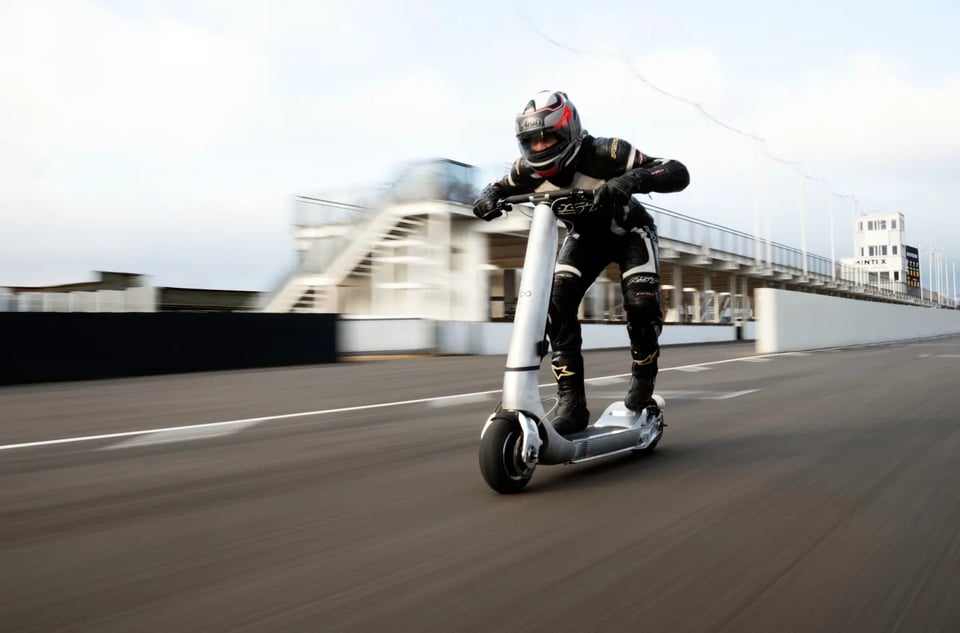The Truth 🫡 of Reliable Next-Generation 🔋 Green Energy Storage
We don't need to "hype" green energy because the benefits over carbon-emitting fossil fuels are readily apparent.
Tough reading long-form these days?
Listen to the audio edition on the Vibe Coded Podcast
I'll cut right to the chase: there is a concerted effort here in America to mislead the public when it comes to the topic of renewable energy—specifically, the question of how to deal with production falloff when the sun's not out and the wind's died down.
If you have the brains of a deranged toddler trapped in an old man's body, as our current president seems to have, your thinking ends at Sun Go Away, Energy Go Away, Oopsie Boo Hoo. But thankfully, the scientific reality of green energy storage is another matter entirely. (Plus wind power fact check!)
And rather than jump and wave our hands and scream CLIMATE CHANGE YOU FOOLS! 🤬, let's educate ourselves on the cutting-edge of storage solutions so we can sound very smart at dinner parties. (And also, y'know, save the planet. Definitely that.)
Want to stay in the loop on sustainable, genAI-free tech and micromobility? Make sure you don't miss another issue of Cycles Hyped No More:
In that vein, I will present some real-world projects and initiatives which go a long way to solving these problems. But before I do, a quick reminder that my recently launched podcast Vibe Coded is now several episodes in and I am having an absolute blast! I hope you've had a chance to listen to it…if not, what are you waiting for? 😅 I'm also planning on recording an AMA Q&A episode soon, so please send me an email or tag me on Mastodon with your burning questions about genAI gone amuck, the cuckoobananas state of Big Tech, what I talk about in his newsletter, or what I had yesterday for breakfast! 🍳
And now to the topic at hand…
Energy Storage Systems
Kicking things off, let's first classify what the types of energy storage systems are and to do that, I defer to a book authored by professors at India's SRM Institute of Science and Technology and published by the American Chemical Society. They propose these five main types:

The type you're most likely familiar with is electrochemical energy storage—known colloquially as a battery. Battery technology has of course made leaps and bounds in recent years, fueled by (pardon the pun!) the rise of EVs, computerized devices of all sorts, and affordable solar energy systems for homes and businesses. I'll share more battery-related news below, but for the purposes of our immediate conversation, in a shocking twist I'll agree with the naysayers who claim that big batteries alone won't solve the problems of renewables at scale. You're right, the grid can't rely solely on electrochemical energy storage. But guess what? That's not the only form of energy storage!
Pumped Hydroelectric Energy Storage (PHES)
This is a proven and reliable way of storing excess energy produced during peak wind and solar output and then releasing that energy when demand outstrips supply. It's been a key component of the green energy ramp-up in Norway, and I am very excited about such a project coming soon to my neck of the woods in Oregon.

Thanks to a universal force called gravity, a PHES works by pumping water to an upper reservoir when electricity generation levels are high (or grid demand is low), and then letting water flow back down to the lower reservoir when wind/solar generation is low where it passes through a powerplant chamber containing turbines which produce electricity. This significantly reduces the variability of renewable energy generation (which, again, seems to be in the news frequently as a focal point of bizarre disinformation).
The Goldendale Project should begin construction in 2027 assuming legal and final engineering hurdles are cleared, and given the fact that Oregon is home to many large data centers with that number constantly growing due to the rise of Generative AI (yay?), it can't come a moment too soon.
Geothermal "Earthen Battery"

Even a total bozo like our Fearless Orange Leader can't ignore this one, as it survived the Big Beautiful Bill due to the fact that much of the same technology and skill required to work on geothermal energy is shared with the oil & gas industry.
From this report by Canary Media:
The “big, beautiful” Republican legislation largely preserves investment and production tax credits for geothermal power plants — as well as battery storage, nuclear, and hydropower projects — established by the Inflation Reduction Act. Incentives for wind and solar, however, are sharply curtailed, and subsidies for residential clean energy projects will abruptly end after this year.
Geothermal advocates celebrated the outcome for their industry, which they say will be vital to scaling the resource in the United States to meet the nation’s soaring power demand.
Geothermal certainly encompasses power generation, but it can also provide a form of power storage. One such project is a "first-of-its-kind" 3-Megawatt energy storage system on land in Christine, Texas. According to Sage Geosystems (POWER Magazine), it will be the first system to store potential energy deep within the earth and capable of later providing direct electrical power to the grid.
Another exciting energy storage project is one recently completed in Pornainen, Finland: a "sand battery" which is capable of heating homes, schools, and businesses as a replacement for burning oil. Falling under the category of Sensible Heat Storage (SHS) as defined by the ACS paper mentioned above, this battery is charged by excess wind and solar energy with the sand reaching a degree of 500C. A gradual release of hot air then warms water which is already flowing through the district heating network.
Could a Skyscraper Be Turned into a Battery?
Again, gravity is our friend here. There is research to suggest that elevators in high-rise buildings could be transformed into a form of renewable energy storage. As reported by Anthropocene Magazine:
Renewable energy would be used to carry a heavy solid mass up to the top of a building, effectively storing it as potential energy. As the mass comes down, it would drive a generator that produces electricity. Given the stock of tall buildings around the world, such systems could store anywhere from 30 to 300 gigawatt-hours of energy.
However, the researchers point out that while this technology could prove competitive cost-wise to batteries today, with the price of batteries constantly falling the economics of such a proposal might not work out in the end. Still, it's exciting to contemplate how things in everyday use could end up providing ways to even out the generation fluctuations in renewables.
Improvements to Battery Technology at the Device Level
Shifting our attention away from energy storage to energy consumption, there's a whole lot of buzz right now regarding the next breakthrough in battery tech: solid-state.
I reported on this back in March when Mercedes-Benz was testing upcoming solid-state batteries in its flagship electric sedan, and since then we've gotten word that other automakers are following suit.

According to InsideEVs, PowerCo (a subsidiary of the VW Group) has been partnering with QuantumScape on the production of solid-state battery cells and recently provided $131 million towards the development of a San Jose-based production line as part of a pilot program. Currently the VW Group has a 17% stake in QuantumScape, reportedly worth around $459 million. GM is also eagerly pursuing solid-state battery tech even as it recently became the largest producer of battery cells in North America. Yes that's right, even greater than Tesla.
The reason we care about solid-state batteries (or the interim developmental stage of semi-solid-state) is because it promises to allow EVs to go much farther on a single charge—or alternatively, bring costs down significantly for the same amount of range. This makes the adoption of new EVs more appealing and furthers the drive (pardon the pun!) towards getting polluting gas-guzzlers off our streets.
It's too early to tell how this could impact micromobility devices also (e-bikes, e-scooters, etc.), but I am quite keen to see those efficiencies improve as well.
Green Energy Isn't a Drain on Business…It IS Business
This is the point that we must keep drumming into the heads of a distracted public. Cynical rhetoric which casts renewable energy projects as some sort of socialist scam taking money and jobs away from every good American capitalist is sheer and utter nonsense. Even some of the old-school energy companies which have typically dealt in oil, coal, and gas-based production are getting in on renewables, because that is the future. You know that on Cycles Hyped No More I often talk about the dangers of saying things like "XYZ is the Future™"…but in rare cases it really is true. We don't need to "hype" green energy because the benefits over carbon-emitting fossil fuels are readily apparent (assuming you listen to the people who actually know what they're talking about).
Trump may have a phobia of windmills for inexplicable reasons, but wind and solar power (and other forms of renewable energy generation) are transforming energy infrastructure around the world. Even countries which until recently were seen as major polluters such as China are seeing rapid growth in renewables. While we have a long way to go before we can breathe a sigh of relief that catastrophic climate change has been solved, any news on this front is good news and most welcome.
Until next time my friends,
Jared ✌️
🤔🌩️ Things that make you think:

I know a lot of people who don’t want to drop a couple thousand dollars on an electric bike, but still want the joy and freedom of zipping around town at a modest 18mph, while being able to hop on a subway or bus if needed. They want something you can carry with one hand, but that still has the stability to carry you around town.
This is not one of those scooters. The Bo Turbo was designed by a team of ex-Formula One engineers, and glancing at the spec sheet, it would appear that these folks brought some of that manic energy from F1 to this scooter project.
The Bo Turbo will out-accelerate a Tesla Model 3, thanks to 24,000W dual motor propulsion system and an 1,800Wh battery. It has a top speed of 100 mph (!) and can travel up to 150 miles on a single charge. It aims to break the current scooter speed record under official supervision of the Guinness World Records folks.
(um, wow 😅)